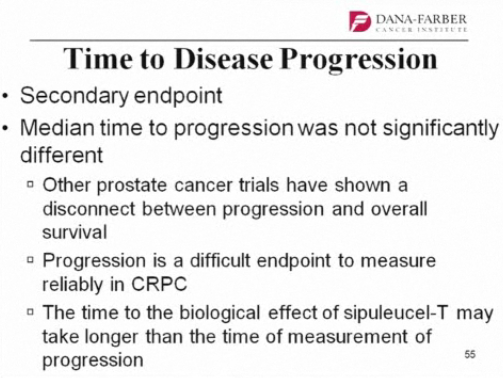Earlier this year we discussed some interesting papers on circulating tumour cells (CTC’s) in prostate cancer and how they are becoming a potentially useful surrogate marker in clinical trials for other cancers including lung cancer.
I was therefore intriqued to see another paper looking at the role of CTC’s in colorectal cancer (CRC) – see link below in the reference section at end of the article:
“Circulating tumour cells early predict progression-free and overall survival in advanced colorectal cancer patients treated with chemotherapy and targeted agents”
One of the challenges with some targeted therapies such as bevacizumab (Avastin) now routinely used for treatment of metastatic colorectal cancer is that while they improve overall survival, not all patients will actually respond to treatment.
While several studies have shown that the KRAS mutation status predicts response to EGFR therapy such as cetuximab (Erbitux) and panitumumab (Vectibix) in colorectal cancer, there is no known equivalent biomarker for determining who is most likely to respond to VEGF therapy with bevacizumab.
This situation creates a dilemma for the medical oncologist, because other than excluding those patients most at risk from the side effects (patients with cardiovascular disease, hypertension etc), perhaps 1 in five of the advanced CRC patients, there is no way to determine which of the remaining 4/5 people will respond, thus potentially exposing all to the not insignificant systemic effects of the drug with no idea who might be an ideal candidate.
Previously, research from Cohen et al., has shown in advanced CRC that the CTC at baseline and during treatment were prognostic for OS and PFS (see references below). These studies included a broad heterogeneous population of untreated and pre-treated patients who received different schedules of treatment, making it difficult to draw specific conclusions. That said, the research demonstrated that the technique is useful and can be measured from blood samples while not requiring invasive biopsies.
In this article, the researchers decided to see whether CRC’s would be a useful tool for predicting the responders from non-responders better in a more homogenous population.
What did the results show?
Perhaps the most interesting quote in this journal article was the finding that:
“The combined analysis of CTC and CT imaging provided a more accurate outcome assessment than either modality alone.”
Clearly, RECIST measurements are not going to go away, but combining the data with newer biomarker analysis that reflects the underlying biology may well be a good compromise.
What does this all mean?
Historically, physicians have used pathologic measures of measuring tumour response using RECIST criteria, but the problem with this approach is that tumour shrinkage alone does not always translate into an improvement in meaningful outcome for the patient. Sometimes patients can have no shrinkage and stable disease but still a reasonable and functional quality of life, as happens with some soft tissue sarcomas, for example.
New surrogate markers of survival are therefore needed that also tell us something about about the risk of recurrence. This new paper provides additional evidence that:
“The CTC count before and during treatment independently predicts PFS and OS in ACC patients treated with chemotherapy plus targeted agents and provides additional information to CT imaging.”
They based this conclusion on the results that demonstrated:
“The sensitivity and specificity of high CTC at baseline for the prediction of progressive disease on CT imaging were 16.7% and 70.1%, respectively, and of high CTC at 1–2 weeks after the start of treatment 20.0% and 95.1%, respectively.”
They also went on to note that:
“We demonstrate that CTC counts identify a small group of patients with unfavourable outcome early during treatment. However, whether a change in treatment on the basis of CTC count will result in a better survival for this group is yet unknown, and this issue should be addressed in a prospective trial. In such a design, it will also be worthwhile to investigate the cost-effectiveness of CTC testing.”
Unfortunately, although a reasonably large number patients were evaluated (n=467) in this study, half were treated with capecitabine, oxaliplatin, and bevacizumab and half received the same regimen plus weekly cetuximab, but the results were oddly described in the aggregate. We therefore have no idea whether CTC’s were more useful in the bevacizumab only arm, or when cetuximab was added. We do know that in the patients who did poorly, although their specific treatment is not described, they did have high CTC levels and poor disease control.
CTC’s are something we will likely hear a lot more about in research going forward from a biomarker perspective though, as researchers begin to incorporate their measurement into the design of more clinical trials.
References:
 Tol, J., Koopman, M., Miller, M., Tibbe, A., Cats, A., Creemers, G., Vos, A., Nagtegaal, I., Terstappen, L., & Punt, C. (2009). Circulating tumour cells early predict progression-free and overall survival in advanced colorectal cancer patients treated with chemotherapy and targeted agents Annals of Oncology, 21 (5), 1006-1012 DOI: 10.1093/annonc/mdp463
Tol, J., Koopman, M., Miller, M., Tibbe, A., Cats, A., Creemers, G., Vos, A., Nagtegaal, I., Terstappen, L., & Punt, C. (2009). Circulating tumour cells early predict progression-free and overall survival in advanced colorectal cancer patients treated with chemotherapy and targeted agents Annals of Oncology, 21 (5), 1006-1012 DOI: 10.1093/annonc/mdp463
Cohen, S., Punt, C., Iannotti, N., Saidman, B., Sabbath, K., Gabrail, N., Picus, J., Morse, M., Mitchell, E., Miller, M., Doyle, G., Tissing, H., Terstappen, L., & Meropol, N. (2009). Prognostic significance of circulating tumor cells in patients with metastatic colorectal cancer Annals of Oncology, 20 (7), 1223-1229 DOI: 10.1093/annonc/mdn786
Cohen, S., Punt, C., Iannotti, N., Saidman, B., Sabbath, K., Gabrail, N., Picus, J., Morse, M., Mitchell, E., Miller, M., Doyle, G., Tissing, H., Terstappen, L., & Meropol, N. (2008). Relationship of Circulating Tumor Cells to Tumor Response, Progression-Free Survival, and Overall Survival in Patients With Metastatic Colorectal Cancer Journal of Clinical Oncology, 26 (19), 3213-3221 DOI: 10.1200/JCO.2007.15.8923

 According to the
According to the